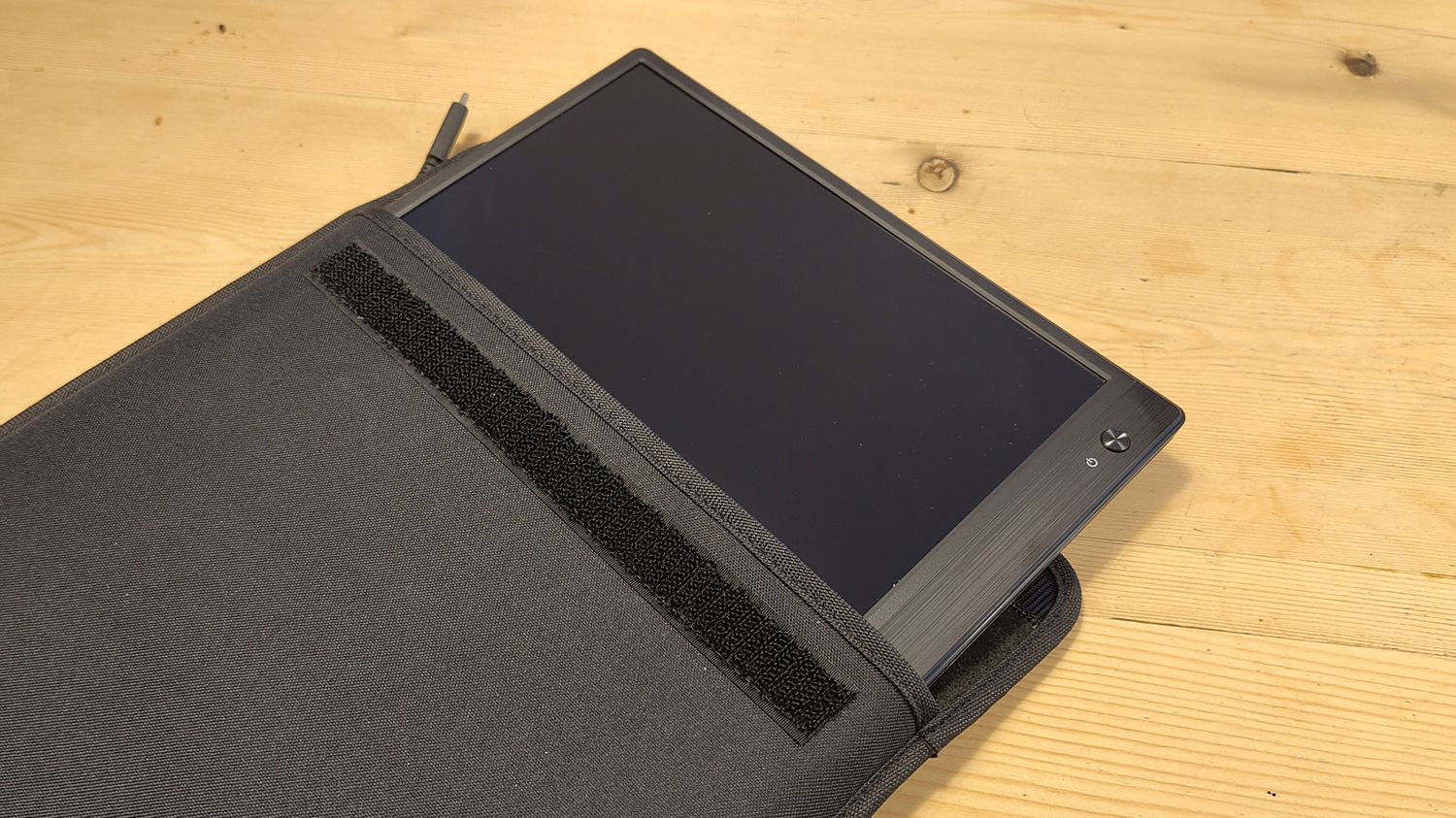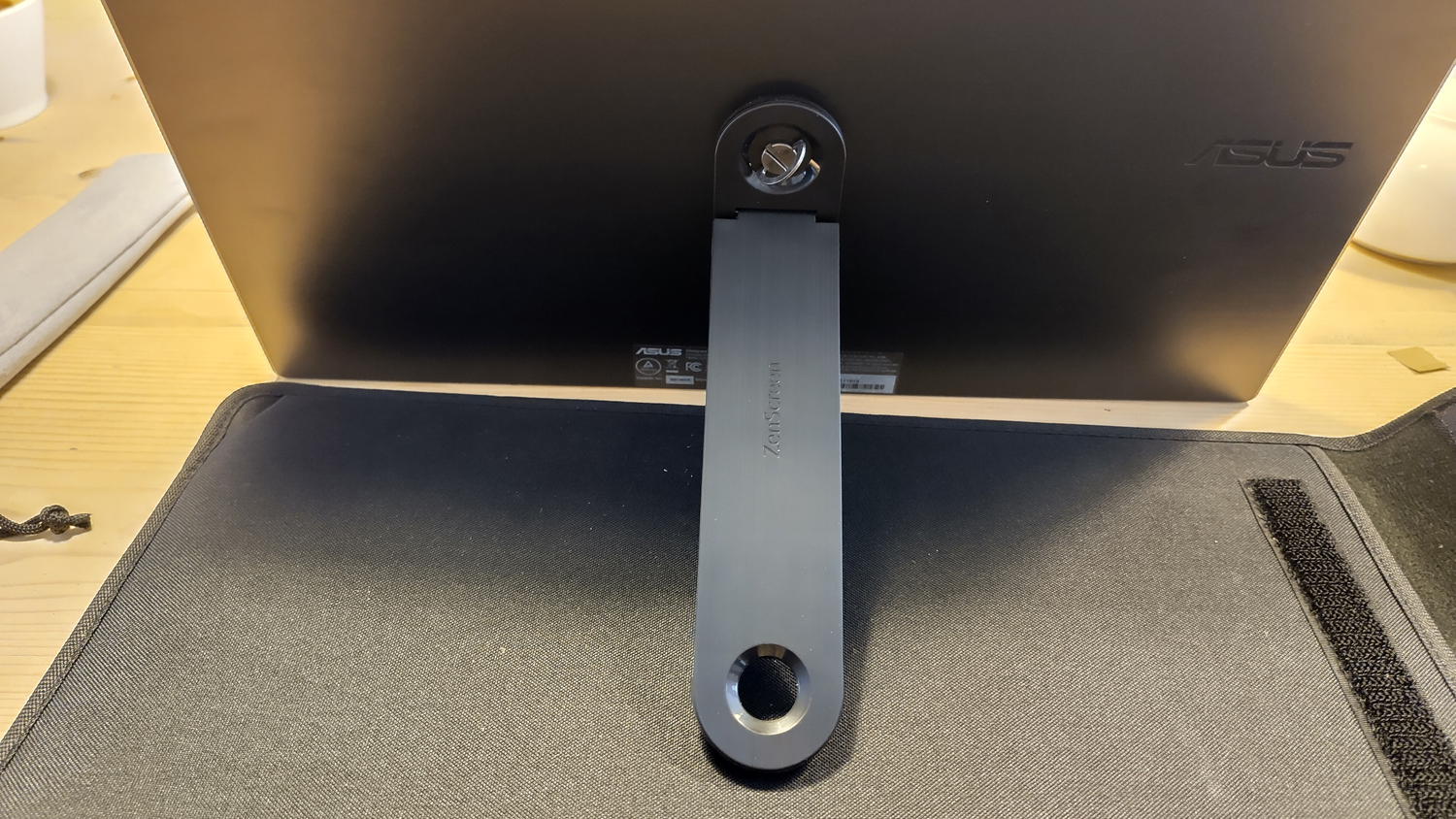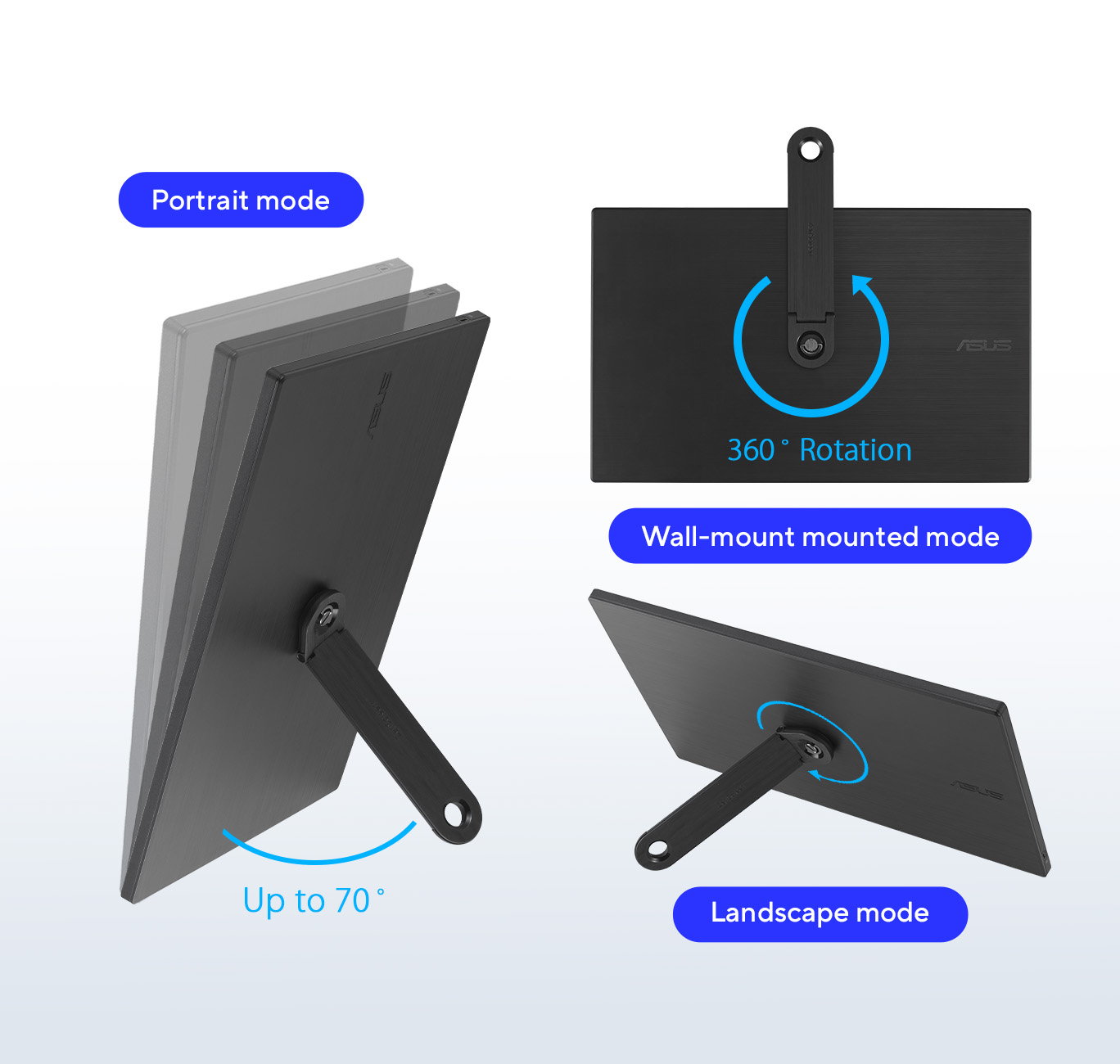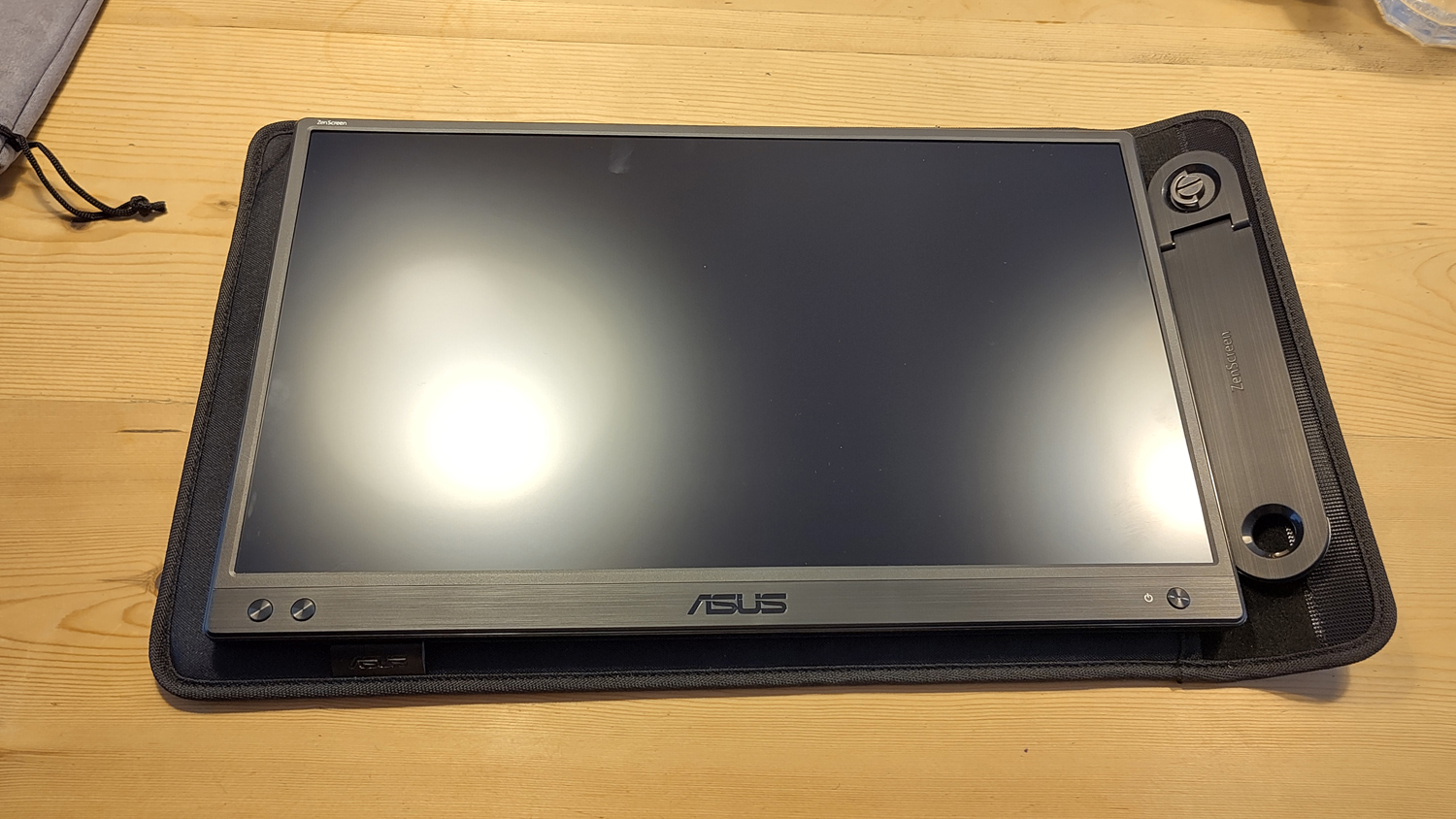Our Verdict
Portable, simple to use and affordable, the ASUS ZenScreen MB166CR is a great choice for creatives who need a second monitor on a budget. The screen is clear and crisp, although brightness and colour accuracy are sometimes wanting; you get what you pay for. This is a great lower-budget second monitor for those jobs that don’t require 100% colour accuracy, and it’s a simple and functional way to extend your workspace without a tonne of complex wiring. It’s perfect for writing or audio editing but also functions fine for early-draft graphics work.
For
- Extremely portable
- Plug and play (but drivers improve it)
- Affordable
Against
- A bit dull for visual work
- USB-C cable is a bit awkward
Why you can trust Creative Bloq
I love to use a double screen, whether I’m editing, writing or drawing. Previously I waxed lyrical about the HP E34m G4’s curved screen because I finally found something big enough to contain my setup in a single screen. While I’m used to working with a lot of space in my home setup, when I’m out and about I tend to be stuck with a single 16:9 box. And this is one of the main reasons I’ve struggled to work while travelling; a double screen is so key to my audio-editing, writing and admin setup that without that second monitor, I feel like I’m missing a limb.
Enter the ASUS ZenScreen MB166CR. One of a new round of portable monitors, the ASUS ZenScreen MB166CR is hyper-portable, plug-and-play friendly and because it’s run solely off of its USB-C cable, it doesn’t require you to hog all the plugs (a coffee-shop crime). Retailing at around £169, it’s a budget version of big OLED sister the ASUS ZenScreen MQ16AH, with a smaller price tag to go with its lower-spec screen.
ASUS ZenScreen MB166CR: Key specifications
| Screen: | LED IPS 15.6" 16:9 |
| Display viewing area: | 34.4 x 19.3cm/13.5 x 7.6 inches |
| Resolution: | FHD 1920 x 1080p |
| Display surface: | Non-glare |
| Response time: | 5ms (GTG) |
| Pixel pitch: | 0.179mm |
| Refresh rate: | 60Hz |
| Brightness: | 250 nits |
| Display colours | 262k |
| Viewing angle: | (CR≧10, H/V) : 178°/ 178° |
| Contrast ratio: | 800:1 |
| Connectivity: | USB-C |
| Dimensions: | 36.01 x 22.56 x 1.18 cm (14.18" x 8.88" x 0.46") |
| Weight: | 1.05kg (780g without stand) |
| Additional features | TÜV Flicker-free, TÜV Low Blue Light |
ASUS ZenScreen MB166CR review: Design and build

The ASUS ZenScreen MB166CR isn’t that much to write home about visually, which is what you want in an external monitor. A thin bevel surrounds an HD screen, an on button is sited in the corner and there are buttons to control the different light modes. It’s simple, it’s sleek and it works. At barely 1kg it doesn’t add significantly to the weight of a laptop and it fits neatly into a laptop pocket.
One of the main complaints previous users had about the ASUS ZenScreen MB166CR was the stand; it was a magnetic fabric case-stand, similar to an iPad case, which was a bit awkward to set up and apparently didn’t always stay in place. Luckily, this version of the ASUS ZenScreen MB166CR has a far more elegant solution: a strong and sturdy rotating kickstand. The kickstand, installed with an easy-turn capped screw, can be added or removed in seconds and feels very sturdy. It stands up to being rotated frequently and holds the screen steady both in horizontal and vertical modes. It can also be used to hang the screen on the wall for office work.
The one design downside I found is the USB-C cable. While it’s a thick and sturdy cable, I’m not sure why it’s straight rather than a more practical ninety-degree design; it looks downright silly sticking out the top of the monitor, not to mention a little unstable. The fact that the screen is powered through the USB-C is both a blessing and a curse; although with no external power lead, the screen is very quick and easy to set up, it cannot be plugged into a mobile phone (although other, battery-powered ZenScreens are available) and some older laptops don’t transmit enough power through their USB-C ports to run the screen.
ASUS ZenScreen MB166CR: Features and performance

The ASUS ZenScreen MB166CR performs well for a budget portable monitor. Brightness and contrast are pretty good and the different picture modes help adapt it to different situations (as do the blue light filters). I found it quick and easy to use, although to get the best performance users should make sure the drivers are installed and updated; without them, I had to manually modify the display settings when I wanted to switch between portrait and landscape. There’s very little input lag and the transition between screens is seamless.
Unfortunately, the ASUS ZenScreen MB166CR isn’t fully suited to users for whom colour is a crucial element; while it is a sharp, clear screen, its colours can run quite dull and can look a bit washed out at some angles. This isn’t really a problem for writers or audio editors, and indeed anyone doing line-work or rough-cuts should still find it useful. But if you’re desperate for accurate colours, this isn’t the external monitor for you.
Daily design news, reviews, how-tos and more, as picked by the editors.
Should I buy the ASUS ZenScreen MB166CR?

At £169 (and often on sale), the ASUS ZenScreen MB166CR is a great, affordable investment for someone looking for a portable, functional external monitor. Next time I need to work from a laptop for an extended period, I know I’ll be seeking one out. For those who want the functionality of a good, portable external monitor but need the upgraded colour accuracy and depth of an OLED screen, the ASUS ZenScreen MQ16AH is probably a better bet.
| ASUS ZenScreen MB166CR | ASUS ZenScreen MQ16AH |
|---|---|
| Brightness: 250 nits | Brightness (HDR, peak): 400 nits |
| Row 1 - Cell 0 | Brightness (typical): 360nits |
| Contrast ratio: 800:! | Contrast ratio (HDR, Max): 1,000,000:1 |
| Row 3 - Cell 0 | Contrast ratio (typical): 100,000:1 |
| Display colours: 262k | Display colours: 1.0737 billion (10 bit) |
| Row 5 - Cell 0 | Colour space (DCI-P3): 100% |
out of 10
Portable, simple to use and affordable, the ASUS ZenScreen MB166CR is a great choice for creatives who need a second monitor on a budget. The screen is clear and crisp, although brightness and colour accuracy are sometimes wanting; you get what you pay for. This is a great lower-budget second monitor for those jobs that don’t require 100% colour accuracy, and it’s a simple and functional way to extend your workspace without a tonne of complex wiring. It’s perfect for writing or audio editing but also functions fine for early-draft graphics work.

